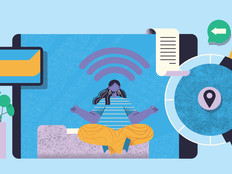“Many students, particularly low-income students, may have an internet connection, but it’s probably on a mobile device and it’s probably data capped,” says Keith Krueger, CEO of the Consortium for School Networking (CoSN), in a previous interview with EdTech. “So how do school systems ensure that you can do online learning? How do you do a virtual course when kids don’t really have broadband access at home, and they might be sharing a device with their brothers and sisters?”
IT leaders also continue to see the importance of digital equity. According to a new CoSN report on IT leadership, which was sponsored in part by CDW•G, nearly 96 percent of IT leaders from more than 500 districts surveyed considered digital equity a top priority — and this was conducted before the pandemic further exposed the gaps that existed.
“As districts and our world become increasingly digital, students that lack Wi-Fi and access to devices at home are at a disadvantage,” writes Paula Maylahn, project director for CoSN’s interoperability initiatives, in the report.
Here are other things to note about the current state of digital equity in K–12 education.
READ MORE: Learn about other key findings from CoSN’s 2020 IT Leadership report.
Tackling the Digital Divide, One Step at a Time
Since 2019, the degree to which digital equity is a priority for IT leaders has shifted, according to the CoSN report. Compared with last year, the percentage of respondents who consider digital equity as a moderately, very or extremely important priority went up from 70 percent to 86 percent.
The report also notes the strategies school districts have adopted to increase broadband access outside of school. Among the respondents who are working to improve internet access, the majority (24 percent) provide loaner hotspots. Meanwhile, 19 percent worked with their community or business to distribute Wi-Fi hotspots, 17 percent deployed district-owned hotspots and 14 percent participated in provider-sponsored activities.
However, nearly half still do not provide any networking services outside of school.
So, what does this mean for IT leaders today? It shows just how their responsibilities have expanded beyond school system infrastructure, according to the report.
“They are implementing innovative solutions in an effort to address the digital inequity that exists outside of their classrooms,” Maylahn writes in the report. “Their persistence and willingness to explore new technologies to solve problems are what make IT leaders what they are: leaders.”
That’s evident in MASD, which not only purchased mobile hotspots, but also reconfigured Wi-Fi access points so that families could use the internet from the school parking lot. Meanwhile, Chicago Public Schools plans to distribute thousands of mobile hotspots to homeless students in their district.
Other districts have taken alternative methods, such as installing Wi-Fi routers in school buses and partnering with public broadcasting channels so students can still access educational programs from home. Many have also sided with educational organizations urging the Federal Communications Commission to allow schools to use E-rate to expand home internet for students while schools are closed.
It’s important to think about how these strategies might help districts evolve their digital-equity roadmap moving forward. Prior to the pandemic, school leaders from districts such as Parkland School District in Allentown, Pa., have joined equity-focused consortia to help get more fiber to households that need it.
As Tracy Smith, assistant to the superintendent for operations at Parkland School District, shares with EdTech, it’s crucial for school and IT leaders to recognize that bridging the digital divide is not something a district can do on its own.
“You have to work in tandem with the community,” she says.
This article is part of the “ConnectIT: Bridging the Gap Between Education and Technology” series. Please join the discussion on Twitter by using the #ConnectIT hashtag.






![[title]Connect IT: Bridging the Gap Between Education and Technology [title]Connect IT: Bridging the Gap Between Education and Technology](http://www.edtechmagazine.com/k12/sites/default/files/articles/2014/05/connectit.jpg)




